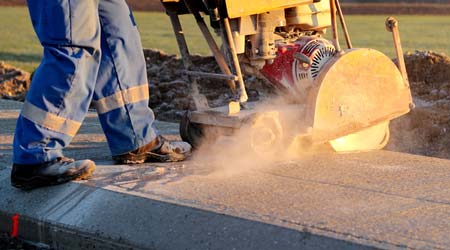
OSHA Alert: New Rule Targets Exposure to Silica Dust
April 27, 2016
The U.S. Occupational Health and Safety Administration (OSHA) has issued a final rule to improve protections for workers exposed to respirable silica dust. The rule will curb lung cancer, silicosis, chronic obstructive pulmonary disease and kidney disease in workers by limiting their exposure to respirable crystalline silica.
An estimated 2.3 million men and women face exposure to respirable crystalline silica in their workplaces, including 2 million construction workers who drill and cut such materials as concrete and stone, and 300,000 workers in operations such as brick manufacturing, foundries and hydraulic fracturing. OSHA estimates that when the final rule becomes fully effective, it will save more than 600 lives annually and prevent more than 900 new cases of silicosis – an incurable and progressive disease – each year. The agency also estimates the final rule will provide net benefits of about $7.7 billion per year.
Most employers can limit harmful dust exposure by using equipment that is widely available – generally using water to keep dust from getting into the air or a ventilation system to remove it from the air. The rule provides greater compliance assistance to construction employers – many of which run small businesses – by including a table of specified controls they can follow to be in compliance. The rule also staggers compliance dates to ensure employers have sufficient time to meet its requirements.
The final rule is written as two standards — one for construction and one for general industry and maritime. In addition to reducing the the permissible exposure limit for crystalline silica, the rule includes employer requirements such as: limiting worker exposure through work practices and engineering controls such as water or ventilation; providing respiratory protection when controls are insufficient; training workers; limiting their access to high exposure areas; and providing medical exams to highly exposed workers.
Read the final rule
here.
This Quick Read was submitted by Dan Hounsell, editor-in-chief of Facility Maintenance Decisions, dan.hounsell@tradepressmedia.com.
Next
Read next on FacilitiesNet












